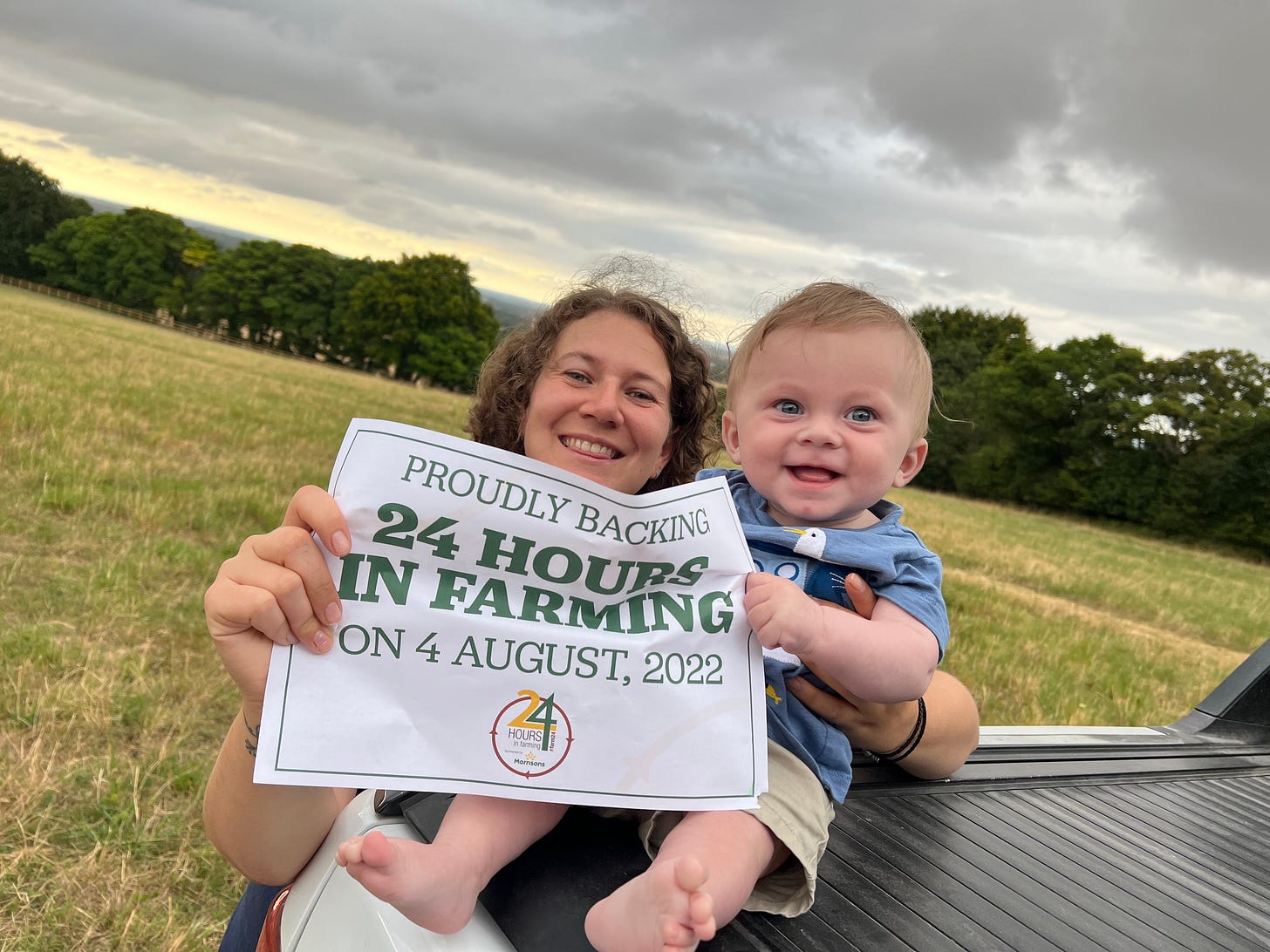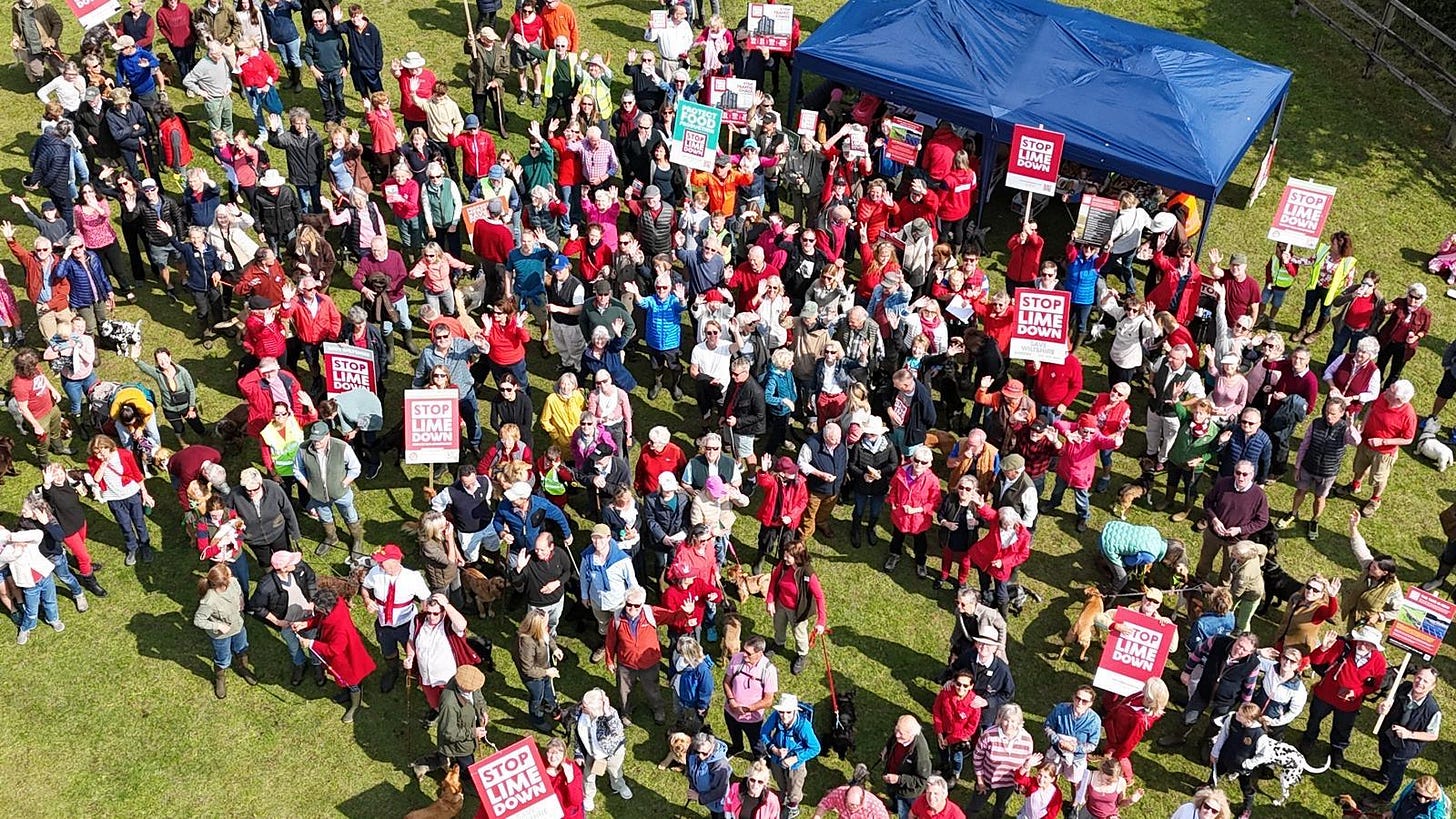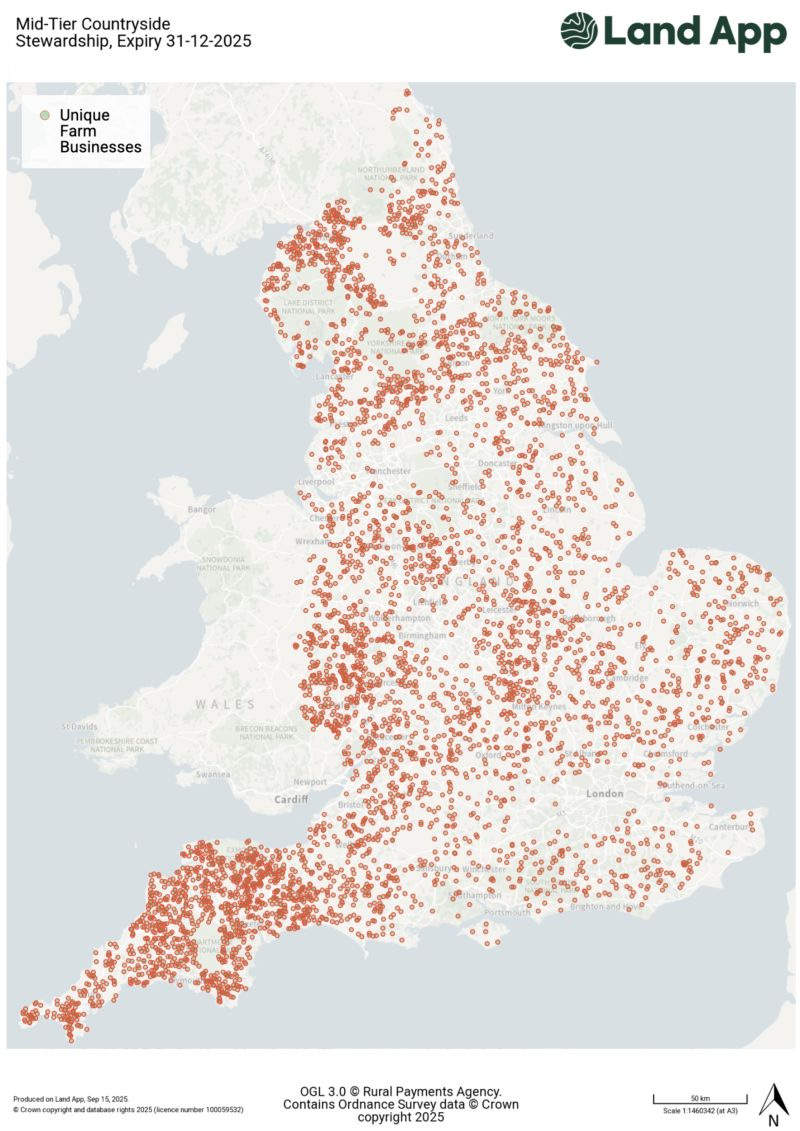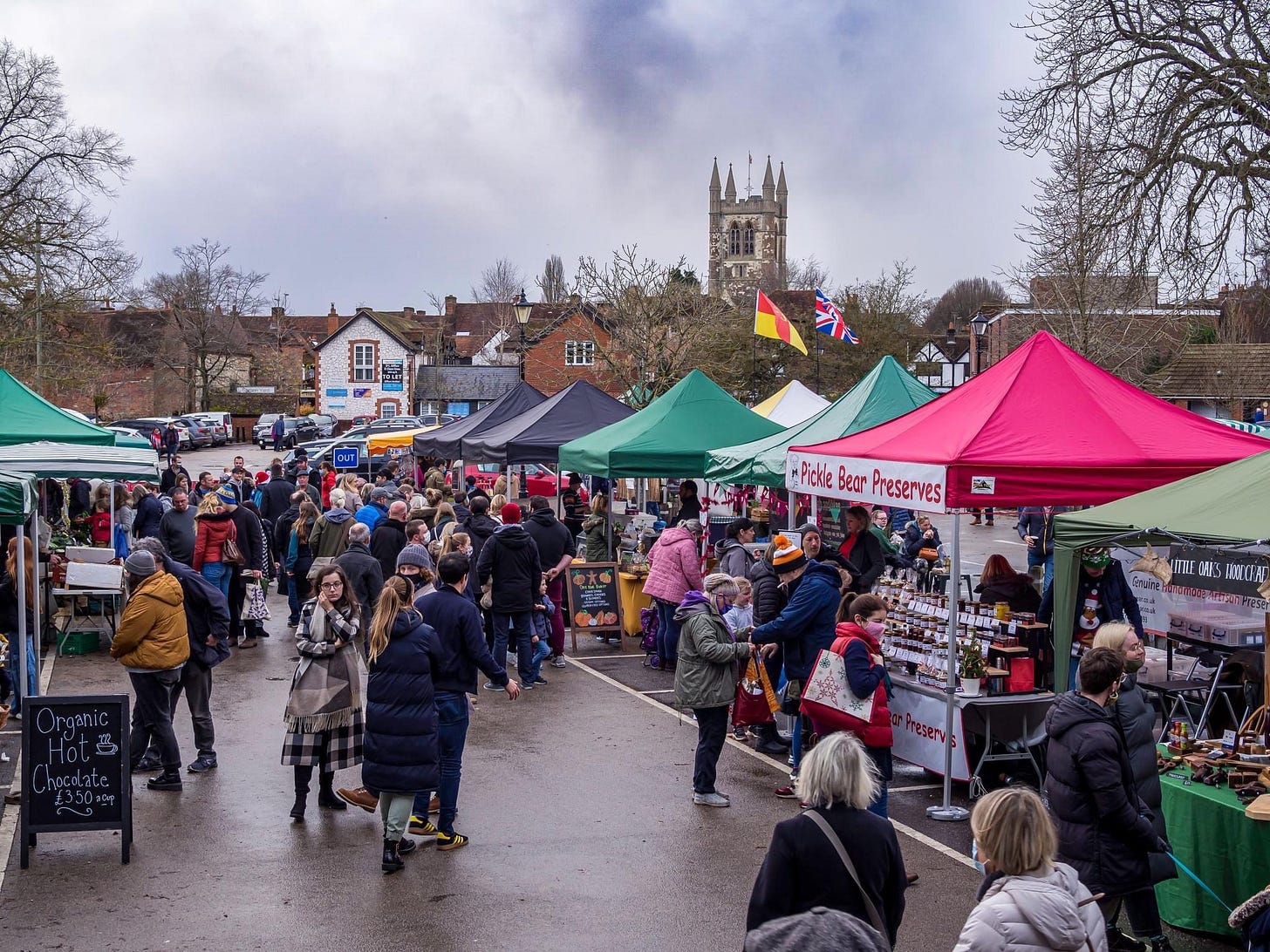Who Really Owns the Countryside
How policy, power, and planning are reshaping our fields and our food
Who is the countryside really for and what kind of future do we want to build on Britain’s land? These questions are echoing louder than ever across our fields and hedgerows. After years spent on the front lines of planning battles I know this isn’t just a policy debate. It is a fight for the future of farming, food, and rural life itself.
Since I last wrote about land use the pressure has only intensified. Fields that once fed communities are now eyed for housing, solar arrays, and industrial projects. The government’s latest call to arms is clear. Housing Secretary Steve Reed, who was previously responsible for DEFRA, is now vowing to “build baby, build” and deliver one and a half million new homes. The pace is accelerating and the countryside is changing fast. Every acre lost is a step closer to a food system built on imports and uncertainty.

But this is not just about numbers or policy. It is about what happens when a family’s home, livelihood, and sense of belonging are tied to land that feels increasingly precarious. Our own journey moving from hope to legal battles to the heartbreak of enforced change mirrors what is happening to small farms across Britain. When farmland is re-zoned or sold off it is not just soil that is lost. Skills, knowledge, and a connection to a place cannot be rebuilt overnight. For my family, this uncertainty has meant sleepless nights and tough choices. We are constantly deciding what to fight for and what we must let go.

The government’s focus on building is not happening in isolation. The new Housing Secretary was the former DEFRA minister. It does not sit easily with me that someone who was overseeing food, farming, and the environment is now tasked with accelerating housebuilding. Land is not just a backdrop for new homes. It is the foundation for food security, climate resilience, and nature recovery. When policies for farming and housing are made in silos or handed from one ministerial brief to another it is easy to lose sight of how deeply connected these issues are.
Sam Carlisle’s recent article on Scribehound brought this home with real force. In a Suffolk village, residents watched as their community was swept up in the tide of development. Planning decisions made on technicalities. Developers rolling out identikit housing. Ancient woodlands and rare species pushed aside. Local voices drowned out by policy targets and developer interests. Sam’s frustration is shared by many. Why are concerns about infrastructure, water, schools, and nature deemed outside the remit of decision-makers? Why are we told that bats, newts, and barn owls are inconvenient rather than vital indicators of a healthy countryside?

These stories are not just anecdotes. They are threads in a much larger tapestry of struggle and hope around food security, land access, and the future of British farming. Small farms like ours produce a diversity of crops and livestock and support local supply chains and food resilience. But access to land is getting harder every year. Farmland now costs between ten thousand and fifteen thousand pounds per acre and most of it is inherited or locked into large estates. New entrants face steep hurdles. In the last decade alone over eleven thousand farm businesses have closed. Land ownership is becoming even more concentrated.
It is often small farms that serve as the UK’s best stewards of wildlife and biodiversity. We look after hedgerows, wildflower meadows, ponds, and woodlands. Our flexibility allows for diverse cropping, rotational grazing, and the integration of wildlife habitats in ways large industrial farms simply cannot match. Many of us have relied on agri-environment schemes like Countryside Stewardship Mid-Tier agreements to keep nature recovery moving forward. As twenty twenty five ends thousands of these agreements are expiring. Years of conservation work are at risk. More than four thousand five hundred farms and fifty one thousand hectares of important arable land could lose vital support. After pressure from farmers and advocacy groups the government has announced a one year extension for all expiring Mid-Tier agreements. It is a relief but it is only a stopgap. What we need is a long-term stable solution that supports sustainable farming and nature recovery for the future.

The rhetoric of “build baby, build” may sound ambitious but it risks bulldozing not just fields but the fabric of rural life. Local democracy feels hollowed out. The planning process seems rigged in favour of those with the deepest pockets not those with the deepest roots. When planning is driven by national targets and developer lobbying the voices of those who live and work on the land are sidelined. Every field lost to tarmac is a field that once grew food supported wildlife and anchored a community. With nearly half our food imported each acre matters more than ever.
We need homes but not at the cost of food security, nature and local identity. True progress means building with respect for place ecology and the needs of existing communities. It means ensuring local people have a real say in how their countryside is shaped. It means supporting small farms and rural businesses that sustain both people and the land.

As the government accelerates this new era of building it is more important than ever to speak up for a balanced, thoughtful approach to land use. If you care about the future of the countryside, now is the time to get involved. Share these stories. Join local campaigns. Make your voice heard before the landscape changes for good.
If you have seen changes in your local countryside or have thoughts on this issue I would love to hear from you.
What you can do today
Share this post with friends and family
Join your local campaign group
Write to your MP about sustainable land use
Support small farms at your local market
Key Facts
Over eleven thousand farm businesses have closed in the last decade
Farmland now costs between ten thousand and fifteen thousand pounds per acre
More than four thousand five hundred farms and fifty one thousand hectares of arable land may lose support as agreements expire
If you found this post valuable and want to support honest reporting on Britain’s countryside I invite you to subscribe for free to get future updates and stories straight to your inbox.
If you are already a subscriber and want to help sustain this work please consider becoming a paid subscriber. Your support directly funds in-depth coverage, independent research, and community resources for people who care about food, farming, and the future of rural life. Every new and paid subscriber helps keep this conversation going.
Sources
"Build Baby, Build!" Sam Carlisle - Scribehound
Housing Secretary issues 'call to arms' to 'build, baby, build' - Press Release, Gov.uk
The Countryside Stewardship Cliff Edge Facing Farmers - Land App
If just 5% of my readers tipped £1/$1 this essay would pay for itself in terms of time spent working on it.





It will be some comfort for you to know that this Government don't stand a cat in hells chance of hitting their housing target and that the number of applications for Planning Permission are well down on 12 months ago. There was an article in The Spectator about it in the last few days.